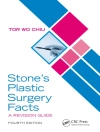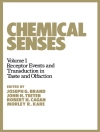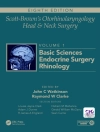The development and refinement of neuroendoscopy has been driven by the persistent desire of neurosurgeons to advance the field and offer less invasive, more efficacious options to patients.
This remarkable multimedia book reflects the technological advances achieved in the last two decades in fiber optics, cold light, cameras, and endoscopic instrumentation. Written by an impressive Who’s Who of international neurosurgeons, the outstanding text and videos reflect global contributions to neuroendoscopy.
Current indications for intracranial and intraventricular endoscopy are described in depth, through detailed chapters, stellar videos, professional animations, and exquisite illustrations. The authors share their clinical expertise on procedures ranging from endoscopic third ventriculostomy to transventricular approach of the fourth ventricle. Cover to cover, this book details the differences, alternatives, advantages, and limitations of the flexible neuroendoscope.
This hands-on learning tool will enable neurosurgeons to perform endoscopy of the ventricles and basal cisterns for exploratory purposes and conditions such as hydrocephalus, congenital aqueductal stenosis, tumors, hypothalamic hamartoma, arachnoid cysts, and neurocysticercosis. Additional topics include endoscopic-assisted microvascular decompression and aneurysm surgery, fluorescence, complications, anesthesia, utilization in developing countries, and future trends.
Key Features:
- Comprehensive multimedia reference with online access to 70 superb videos and animations
- More than 300 meticulously drawn illustrations
- Beautifully illustrated anatomical chapters that facilitate in-depth understanding of endoscopic anatomy
- An entire chapter devoted to flexible neuroendoscopy
- Indications, preoperative preparation, procedure description, intraoperative complications and their management (‘risk and rescue’ techniques), expert pearls, postoperative management, and outcomes
This volume is a must-have resource for neurosurgery and neurology residents, neurosurgeons, pediatric neurosurgeons, and all physicians involved in the care of patients with intracranial and intraventricular disease.
Содержание
I Introduction to Neuroendoscopy
1 The Evolution of Neuroendoscopy
2 Neuroendoscopic Technology
3 Development of a Flexible Neuroendoscope
II Endoscopic Intraventricular and Basal Cistern Anatomy
4 Lateral and Third Ventricle Anatomy
5 Cerebral Aqueduct and Fourth Ventricle Anatomy
6 Basal Cisterns Anatomy
III Clinical Indications
7 Types of Hydrocephalus
8 Congenital Hydrocephalus
9 Obstructive Hydrocephalus
10 Communicating Hydrocephalus
11 Multiloculated and Complex Hydrocephalus
12 Intraventricular and Paraventricular Tumors
13 Colloid Cysts
14 Hypothalamic Hamartomas
15 Neuroendoscopic Approaches to the Pineal Region
16 Intraventricular Hemorrhage
17 Arachnoid Cysts and Cystic Collections
18 Intraventricular and Subarachnoid Space Neurocysticercosis
19 Meningitis and Infectious Hydrocephalus
20 Ventriculoperitoneal Shunt Malfunction
IV Neuroendoscopic Procedures
21 Endoscopic Third Ventriculostomy
22 Aqueductoplasty and Stenting
23 Septum Pellucidum Fenestration
24 Monro Foraminoplasty
25 Endoscopic Shunt Placement
26 Lamina Terminalis Fenestration
27 Endoscopic Approach to the Fourth Ventricle
28 Endoscopic Magendie and Luschka Foraminoplasty
29 Neuroendoscopic Considerations in the Pediatric Patient
V Endoscope-Assisted Microneurosurgical Procedures
30 Principles of Endoscope-Assisted Microneurosurgery
31 Endoscopic Exploration and Biopsy of Basal Cisterns
32 Endoscope-Assisted and Fully Endoscopic Microvascular Decompression
33 Endoscopic-Assisted Resection of Intra-Axial Brain Tumors
34 Endoscopic Resection of Extra-Axial Tumors
35 Endoscopy in Aneurysm Surgery
36 Use of Fluorescence in Neuroendoscopy
VI Special Topics in Neuroendoscopy
37 Complications in Neuroendoscopy
38 Anesthesia in Neuroendoscopy
39 Neuroendoscopy in Developing Countries: Mobile Neuroendoscopy Centers
40 Future of Neuroendoscopy












